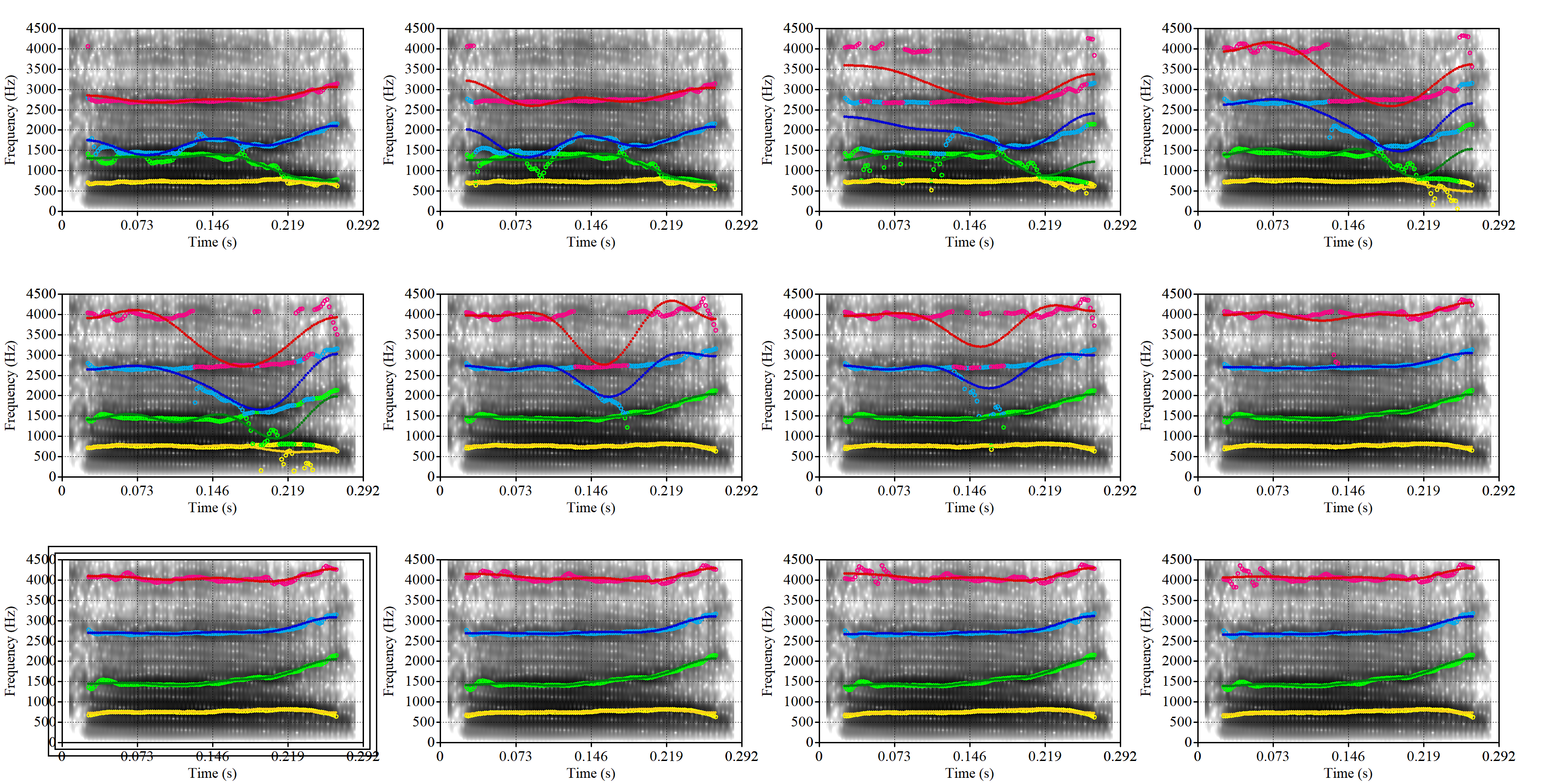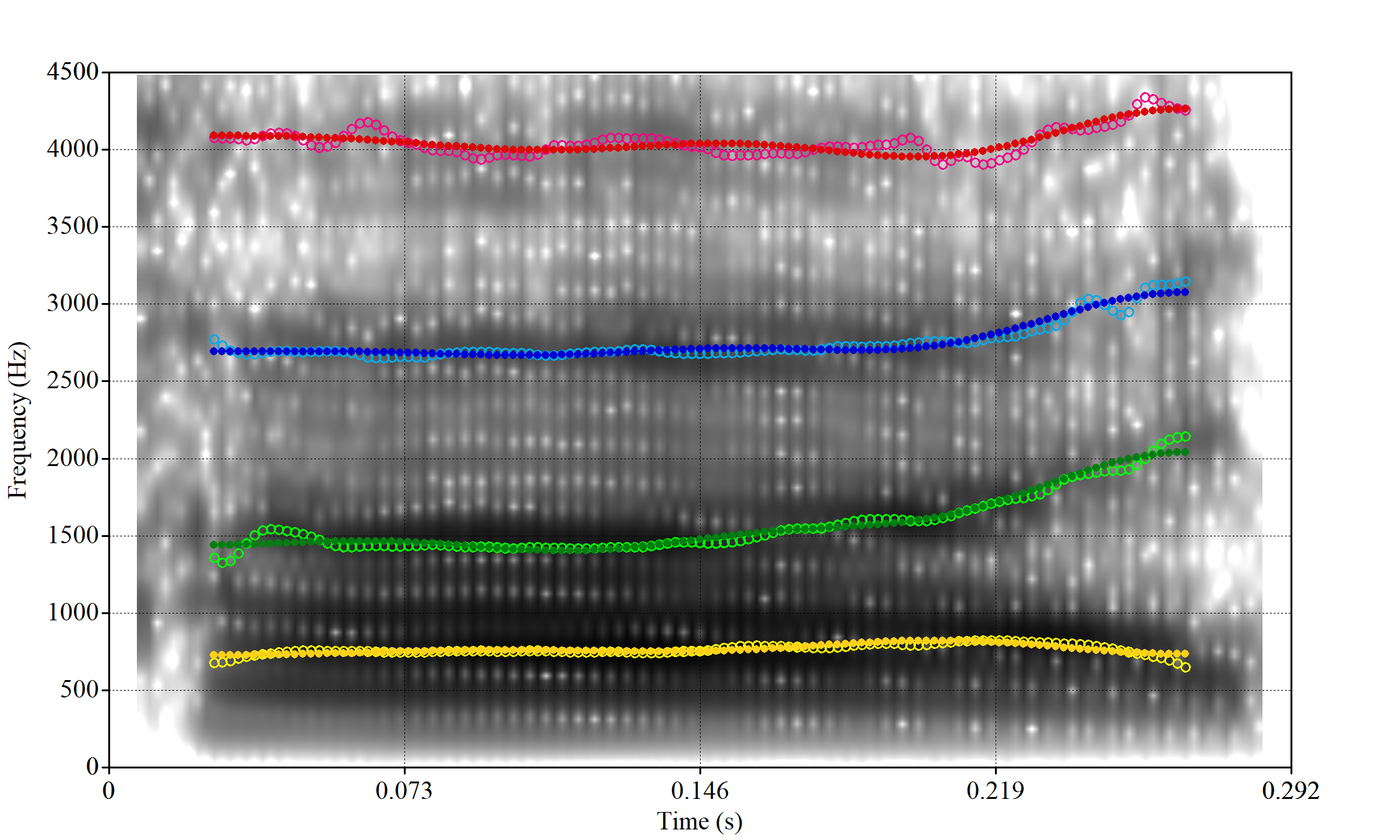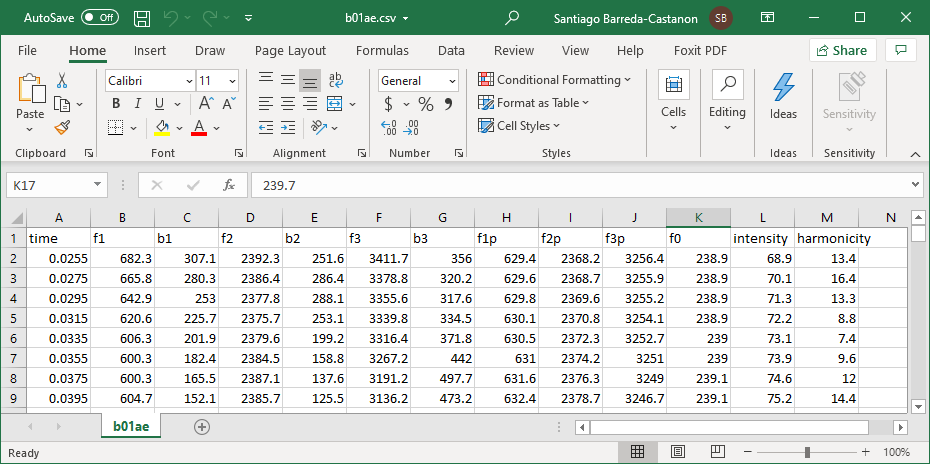A Praat plugin for fast(ish), accurate, (nearly) automatic formant-tracking. [wiki] [YouTube]
Fast Track is a Praat plugin that makes accurate formant tracking fast and easy. Fast Track automatically runs multiple formant analyses on a given sound file, and tries to pick the best one for you (surrounded by extra boxes in the example below).
Fast Track has built-in functions to help along every step of a vowel analysis project from start to finish:
-
Extract vowel sounds from larger recordings with TextGrids files.
-
Automatic selection of the 'best' analysis.
-
Automatically generate images of analysis for data validation. All alternate Analyses are saved for easy corrections.
-
Quick workflow for manually editing formant tracks.
-
Aggregate fine-sampled data into coarser measures (e.g., average formants for every 20% of duration).
-
Automatic generation of images showing final analyses for data validation.
-
Automatic generation of data files containing fine-sampled acoustic analysis calculated every 2 ms along the vowel.
Comparison of multiple analyses:
Image of winning analysis:
CSV file containing analysis information (formant frequencies and bandwidths, f0, harmonicity, intensity, etc.) sampled every 2 ms from the start to the end of the sound:
The plugin can analyze to a single file or to an entire folder of sounds at once. Fast Track generates (among other things):
-
CSV files containing the frequencies of F1-F4, predicted formant values (for error checking), formant bandwidths (F1-F4), f0, intensity, and harmonicity, each sampled every 2 ms (by default).
-
Images for the visual verification of final analyses, and for the comparison of alternate analysis.
-
A log of the selected analyses, which can then be used to select alternate preferred analysis.
-
Detailed information regarding the analyses carried out for each sound.
-
A new (as of 6/23) 'lite' version that doesn't save any intermediate files.
-
Formant tracking is carried out at multiple maximum-formant settings, always looking for 5.5 formants.
-
The goodness of each candidate is established by considering the smoothness of the formant trajectories using a regression analysis (and optional heuristics).
-
The 'best' analysis is selected as the winner. Images are made for visual verification.
-
The user accepts the automatic selection, or indicates an alternate analysis.
-
The user is given an opportunity to manually edit winners to ensure completely-accurate tracks.
For more information please see the wiki! Or check this paper out.
If you use this, please cite it:
Barreda, S. (2021). Fast Track: fast (nearly) automatic formant-tracking using Praat. Linguistics Vanguard, 7(1). https://doi.org/10.1515/lingvan-2020-0051
Its the only way I can tell if people use it and what they use it for. Thanks!
Santiago Barreda - UC Davis, Linguistics (https://linguistics.ucdavis.edu/people/sbarreda)
This project is licensed under the MIT License - see the License file for details
This work is the implementation of the ideas presented in several previous works:
- Nearey, T. M., Assmann, P. F., & Hillenbrand, J. M. (2002). Evaluation of a strategy for automatic formant tracking. The Journal of the Acoustical Society of America, 112(5), 2323-2323.
- Wassink, A. B., & Koops, C. (2013). Quantifying and interpreting vowel formant trajectory information. In Best Practices in Sociophonetics Workshop at NWAV (Vol. 42).
- Weenink, D. (2015). Improved formant frequency measurements of short segments. In ICPhS.
- Zhang, C., Morrison, G. S., Enzinger, E., and Ochoa, F. (2013). Effects of telephone transmission on the performance of formant-trajectory-based forensic voice comparison – Female voices. Speech Communication, 55(6), 796–813. https://doi.org/10.1016/j.specom.2013.01.011



